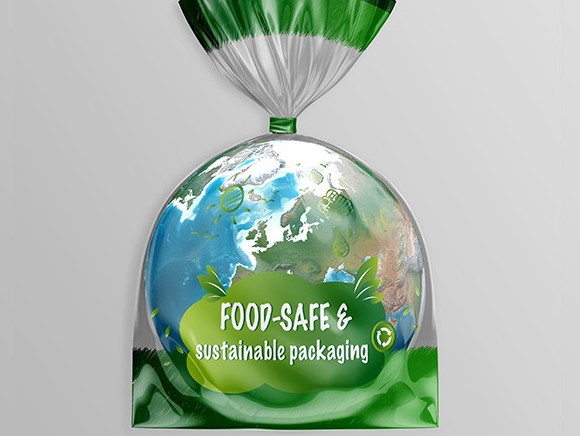
Organic chicken fillets packaged in plastic film: that does not seem like a sustainable combination. Plastic has a bad reputation when it concerns the environment, especially when the plastic soup poses a significant threat to the world’s waters. However, there is another side to the story: this packaging material prevents food waste.
Plastic plays an important role in the shelf life of a product when used as a packaging material. It maintains a balance between carbon dioxide and oxygen, which prevents spoilage. Quality managers are faced with the task of monitoring product shelf life and safety, even with the increased demand for sustainable packaging. According to Platform Duurzaamheid (sustainability platform), sustainable development means: “...development that aligns with modern-day needs without affecting the capacity for future generations to satisfy their own needs.” As such, sustainable packaging should have low environmental impact. One of the packaging materials with this property is biobased plastic.
Biobased plastic is made of plant-based materials, such as maize or potato starch, or sugar from sugar cane. Biobased plastic is even frequently able to be composted and therefore has less impact on the environment than plastic made of petroleum. Of course, the question is whether these synthetic materials have the same properties as traditional plastic. For instance, biobased plastics have to be equally as sturdy as normal plastic and provide the same protection against spoilage. After all, the robustness of packaging is an important factor in logistics: products must be delivered undamaged in spite of the significant movement undergone during transport from the producer to the distribution centre to the supermarket. Products must also have as long a shelf life as possible, another area in which packaging plays a significant role. The prevention of spoilage is especially important in relation to food waste. According to the information organisation Milieu Centraal, packaging accounts for 10% of the environmental impact of a foodstuff and 15% with respect to food waste.
Despite being useful, packaging also comes with risks. Packaging can infect products with materials that are dangerous for public health. For traditional packaging, there has already been extensive research into the migration of hazardous substances, but quality assurance managers have to re-examine new, sustainable packaging for these issues.
Is plant-based plastic of food-grade quality? Will these new materials be accompanied by hazards such as mycotoxins and aflatoxins? It must also be investigated whether sustainable packaging allow for the same oxygen permeation as standard plastic. Plastics with a layer of ethylene vinyl alcohol (EVOH) serve as good barriers against oxygen and other gases, which extend product shelf life and prevent spoilage. Without that type of layer, an imbalance of oxygen and other gases can arise, yielding product discolouration or a decrease in vitamins.
For this reason, extensive testing must be conducted, before (sustainable) packaging can be used. It is also important to look at the packaging as a whole. In order to save on production costs, manufacturers sometimes have to make concessions. For instance, they will opt for a top layer of biobased plastic, but not use it to make the tray. In situations like these, it is important to test whether the layer of biobased plastic utilises the same seal medium as the tray. If the packaging does not close perfectly, it can leak, which affects the shelf life of the packaged product. Shelf life research is the primary tool for quality assurance managers to check whether sustainable packaging is as safe as conventional packaging. Guarantee statements regarding the migration of substances and food-grade quality can be requested from packaging suppliers.

Quality assurance managers have to consistently wonder what types of products lend themselves well to the shift towards sustainable packaging and which ones are less suited to it, if at all. For a products less susceptible to spoilage or those less likely to be discoloured, this step can be made more easily than for those that expire quickly. This makes considerations more complicated. If sustainable packaging leads to spoilage, the environmental impact is greater: food waste continues to have more of an environmental impact than packaging materials.
Photo: Sander Katoen, quality assurance consultant
Source: © KTBA